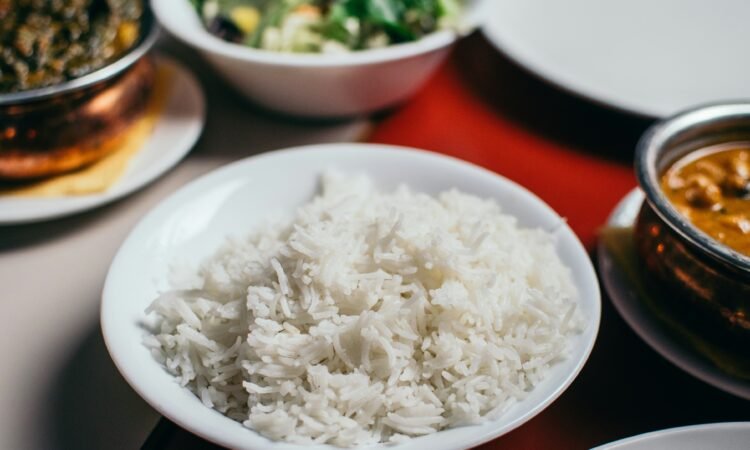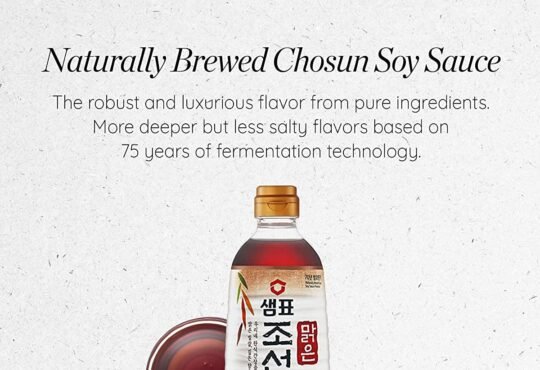
Introduction
White rice is a staple food in many cultures, providing a key source of carbohydrates and essential nutrients. While it is often criticized for its high glycemic index and lower fiber content compared to whole grains, white rice remains a vital part of global diets. In this article, we will explore the detailed nutrition facts of white rice, its macronutrient and micronutrient profile, health benefits, risks, and comparisons with brown rice.
White Rice Nutrition: Macronutrients and Calories
White rice is primarily a carbohydrate-rich food, but it also provides small amounts of protein and negligible fat. Below is a detailed breakdown of its macronutrient content per one cup (cooked, 158g):
| Nutrient | Amount |
|---|---|
| Calories | ~200 kcal |
| Carbohydrates | 45g |
| Protein | 4g |
| Fat | 0.4g |
| Fiber | 0.6g |
White Rice Carbs: Energy Source for the Body
White rice is composed mostly of carbohydrates, primarily in the form of starch. This makes it a fast-digesting energy source, beneficial for individuals needing quick replenishment of glycogen stores. Carbohydrates from white rice provide sustained energy for physical activity and mental alertness.
Though not a high-protein food, white rice provides about 4g of protein per serving. While this is lower than other grains like quinoa or lentils, it can still contribute to daily protein intake, especially when paired with protein-rich foods like beans or lean meats. Protein is essential for muscle repair, immune function, and enzyme production.
White Rice Fiber Content: Digestion and Gut Health
Compared to brown rice, white rice has a lower fiber content due to processing that removes the bran and germ. This makes white rice easier to digest but also reduces its fiber contribution. Fiber plays a crucial role in regulating digestion, preventing constipation, and promoting gut health by feeding beneficial bacteria.
Reference: Mayo Clinic, National Institute on Aging.
White Rice Vitamins and Minerals: Nutrient Profile
Despite losing some nutrients during processing, enriched white rice varieties contain added vitamins and minerals. Key micronutrients include:
White Rice Iron Content: Essential for Oxygen Transport
Iron is critical for red blood cell production and oxygen transport. A serving of enriched white rice can provide around 1.5mg of iron, helping to prevent deficiencies like anemia. Iron supports overall energy levels and cognitive function.
White Rice Folate Levels: Supporting DNA Synthesis
Folate is crucial for cell growth and DNA synthesis. Pregnant women, in particular, benefit from adequate folate intake, and enriched white rice offers a good source of this vitamin. Folate deficiency can lead to neural tube defects in newborns, making it an essential nutrient for expectant mothers.
White Rice Selenium: Antioxidant Properties
Selenium is an important trace mineral that supports immune function and antioxidant activity. White rice provides small amounts, contributing to overall health. Selenium plays a role in reducing oxidative stress and protecting against chronic diseases.
Reference: National Institutes of Health (NIH), Harvard Health Publishing.
White Rice Glycemic Index: Impact on Blood Sugar
One of the biggest concerns with white rice is its high glycemic index (GI). Foods with a high GI can cause rapid spikes in blood sugar levels, making them less ideal for people with diabetes or insulin resistance.
- High GI: White rice has a GI of 70-90, meaning it digests quickly and leads to rapid glucose absorption.
- Comparison with Brown Rice: Brown rice has a lower GI (around 50-60) due to its fiber content, which slows digestion and glucose release.
- Managing GI Impact: Combining white rice with protein, healthy fats, and fiber-rich foods can slow glucose absorption and mitigate blood sugar spikes.
White Rice vs. Brown Rice Nutrition: Which is Better?
Many people debate whether white rice or brown rice is healthier. Here’s a direct comparison:
| Nutrient | White Rice (1 cup) | Brown Rice (1 cup) |
| Calories | 200 kcal | 215 kcal |
| Carbs | 45g | 44g |
| Fiber | 0.6g | 3.5g |
| Protein | 4g | 5g |
| Fat | 0.4g | 1.8g |
| Glycemic Index | High (70-90) | Moderate (50-60) |
White Rice and Diabetes: Should You Be Concerned?
White rice is often linked to an increased risk of type 2 diabetes due to its high glycemic index. However, there are ways to make it a safer option:
- Choose parboiled or Basmati rice, which have a lower GI and slower digestion rate.
- Pair it with fiber-rich foods, such as beans, lentils, or leafy greens, to slow glucose absorption.
- Limit portions to prevent excessive carbohydrate intake and blood sugar spikes.
Reference: American Diabetes Association, Journal of Nutrition & Metabolism.
White Rice Benefits and Risks: A Final Perspective
White rice is neither inherently good nor bad—it depends on how it fits into your overall diet. When consumed in moderation and balanced with other nutrient-rich foods, it can be part of a healthy eating plan.
Summary
White rice remains a widely consumed staple food, offering energy, essential nutrients, and versatility. While its lower fiber content and high GI may raise concerns, these can be managed with mindful eating practices. Whether for athletic performance, digestion, or general wellness, understanding the full nutrition profile of white rice allows for smarter dietary choices.
